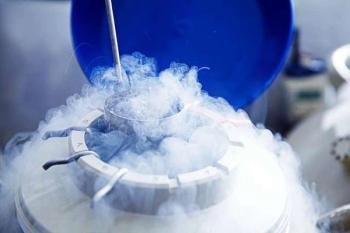
MRI Deemed Safe for Patients With Newer ICDs and Pacemakers
Physicians should no longer rule out ordering an MRI scan for patients with pacemakers or implantable cardioverter defibrillators (ICDs) as long as certain criteria can be met, according to researchers from Johns Hopkins University.
Physicians should no longer rule out ordering an MRI scan for patients with pacemakers or implantable cardioverter defibrillators (ICDs) as long as certain criteria can be met, according to researchers from Johns Hopkins University.1
MRI has generally been avoided in patients with pacemakers and ICDs because of concerns that the strong magnetic field could cause the devices to move inside the body; cause the devices (composed mostly of metal) to heat up and burn tissue; or confuse the devices, causing them to malfunction or misfire. However, a recent study of 438 patients with either a pacemaker or defibrillator who underwent a total of 555 MRI scans showed that there is little risk to patients with these devices if certain steps were taken to ensure patient safety.1
First, the devices must be newer; pacemakers manufactured in 1999 or later and ICDs manufactured in 2000 or later meet this criterion. Second, during the scan, the devices must either be turned off or the sensitivity of the device must be turned down so it ignores the electromagnetic “noise” from the MRI scan. Third, once the device is turned off or the sensitivity is turned down, a clinician trained in cardiac life support should monitor the patients’ blood pressure, heart rhythm, and other vital signs and a clinician capable of device reprogramming should be immediately available, since there is a small risk that the device may revert to default settings during MRI.
Because of the extra resources needed for patients with an implantable device, not every hospital or imaging center will be able to accommodate these patients. In addition, even if one physician believes an MRI scan is indicated, some cardiologists will not clear their patients for the test.
“(I)f there is a truly compelling need for a pacemaker or defibrillator patient to have an MRI, there should be a little more openness to the concept than there is today,” stated Matthew Reynolds, MD, assistant professor of medicine at Beth Israel Deaconess Medical Center and Harvard Medical School.2
References:
References
1. Nazarian S, Hansford R, Roguin A, et al. A prospective evaluation of a protocol for magnetic resonance imaging of patients with implanted cardiac devices. Ann Intern Med. 2011;155:415-424.
2. Reynolds MR, Zimetbaum P. Magnetic resonance imaging and cardiac devices: how safe is safe enough? Ann Intern Med. 2011;155:470-472.
Newsletter
Get the latest clinical updates, case studies, and expert commentary in obstetric and gynecologic care. Sign up now to stay informed.
















